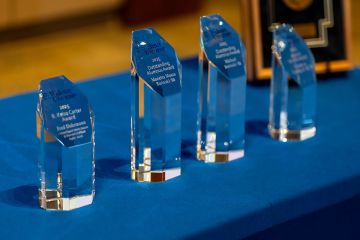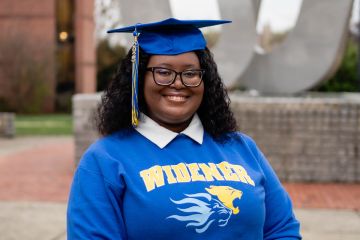Biomedical Engineering Professor Receives Major Grant to Drive Innovation and Student Research

A faculty-researcher in Widener’s School of Engineering has been awarded a federal grant to expand research and develop strategies for prevention and treatment of a birth-related injury.
The five-year, approximately $1.9 million grant from the National Institutes of Health supports the continuation of research led by Anita Singh, associate professor and chair of biomedical engineering, on neonatal brachial plexus palsy (NBPP).
The award is one of the largest ever received by a Widener faculty member.
Reported in about one to four out of every 1,000 births worldwide, NBPP is the result of complicated childbirth scenarios that over-stretches the network of nerves, known as the brachial plexus, which in extreme cases leads to loss of movement or weakness of the arm.
The funding will move Singh’s research into the next phase of investigating effective means of early diagnosis that will guide the required clinical intervention and treatment after the injury occurs.
“Our first goal was to investigate prevention, which is still a goal of ours, but now we want to see what can be done in terms of intervention or treatment,” said Singh.
According to Singh, the funding is not only critical to build on previous investigations, but it also enables her to build partnerships with national and local medical experts, including teams in Texas at UT Health Austin and at Drexel University, to advance the science of neonatal care.
Similarly, the grant will expand Singh’s team of student researchers, a benefit that sets her lab, and others at Widener, apart.
“What is so unique about Widener is that our undergraduates are so heavily involved in research and grants, such as this one, which allows me to engage with students further,” said Singh. “This grant would not work without our students.”
Zaphy Joseph is one of the newest undergraduate researchers to join the lab. The psychology major enrolled in the 3+3 physical therapy program joined Singh’s lab as part of the university’s Summer Undergraduate Research and Creative Activities (SURCA) program. His goal is to explore the complexities of human biomechanics, an area of interest that he was drawn to after treating patients at a physical rehabilitation clinic.
“Working in a clinic, I’ve seen a lot of different neurological injuries and conditions, like Parkinson’s, severe spinal cord injuries, stroke rehabilitation. I’ve always found that interesting and that’s what drew me into Dr. Singh’s lab,” said Joseph.
As a non-engineering student, working closely with a new discipline is helping Joseph to diversify his learning experiences and guide his career track well ahead of graduation.
“Dr. Singh has been extremely helpful in helping me understand the career in general,” said Joseph, who is interested in pursuing a career practicing as both a clinician and academic.
The immersive lab experiences are delivering the same career-level impact for graduate student-researchers Jessica Guarino and Megan Gorleski. Guarino, a student in the 4+1 biomedical engineering program, is partnering with Singh to write her master’s thesis on the topic of NBPP.
“In the research that we’re doing, we are stretching the nerves [in the tissue samples] and seeing how that effects the conduction velocity and to me that is just fascinating because I love learning about the brain and working with it,” said Guarino, who is exploring a career as a neuroengineer.
For Gorleski, her time in Singh’s lab has opened the door to the next step in her academic career. After Widener, the 4+1 biomedical engineering student will continue investigating NBPP with the research team at Drexel University as a doctoral student.






